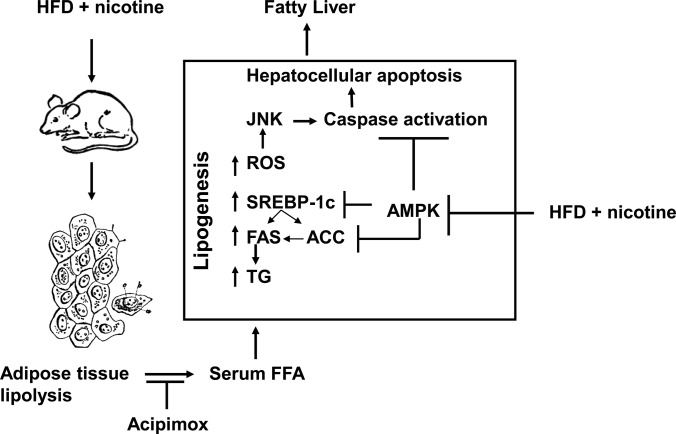Fig. 5.
Model illustrating how nicotine plus a HFD could exacerbate HFD-induced hepatic steatosis in obese mice. Nicotine plus a HFD promotes abdominal lipolysis, resulting in FFA release from adipose tissue into the circulation, thereby contributing to the buildup of lipids as triglyceride (TG) in the liver. In addition, nicotine plus a HFD may also promote de novo lipogenesis through inactivation of AMPK and activation of its downstream target ACC, leading to the development of hepatic steatosis. Inactivation of AMPK can also stimulate lipogenesis through up-regulation of key genes in the lipogenic pathway such as fatty acid synthase (FAS) and ACC by activating the transcription factor sterol regulatory element binding protein-1c (SREBP-1c). Intrahepatic lipid accumulation can also trigger hepatocellular apoptosis through generation of oxidative stress coupled with activation of JNK-mediated apoptotic signaling. AMPK inactivation could further sensitize liver cells to nicotine plus HFD-induced apoptosis.

